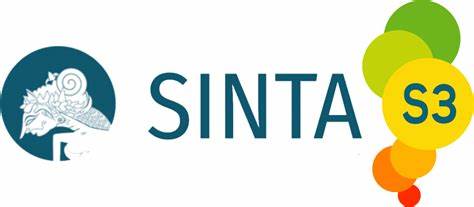TED-TALK: A SUPPLEMENT MATERIAL TO PROMOTE STUDENTS’ AUTONOMY IN LISTENING
DOI:
https://doi.org/10.22460/eltin.v8i2.p91-102Keywords:
autonomy, listening, supplement materials, TED-talksAbstract
This paper explores the use of TED (technology, Entertainment, and Design) Talk in promoting students’ learning autonomy and enhancing English learners’ listening skill, especially in ESL. This research uses mixed method; qualitative descriptive to find out students learning autonomy and students’ perception on the use of TED-Talk, and quantitative descriptive to find out students’ listening score improvement. The respondents of the study are students who were taking the English for Business course even semester of the 2019/2020 academic year at the Indonesian Technocrat University (UTI).The data were gathered through questionnaires and test. The results show that students’ learning autonomy is increasing in terms of learner control, critical reflection, motivation, and information literacy. By using TED-Talk, it is also shown that students’ listening score is increasing even though just slightly. Furthermore, it is found that students’ perception toward the use of TED-Talk is also positive. It gives the good implication in the future that they will continue using it as their additional learning material in listening. The consistence of students’ autonomy in learning will significantly improve students’s comprehension level. Â
Â
Keywords: autonomy, listening, students’ perception, supplement materials, TED-talks
References
Amir, S., & Kang, M. A. (2018). Research in Use of Information & Communication Technologies (ICT) for Developing Listening Comprehension Competency in Foreign/Second Languages: A Review of Selected Tools. International Journal of Social
Sciences & Humanities, 3(1), 44–53. https://doi.org/10.5281/zenodo.1403040
Brunfaut, T., & Révész, A. (2015). The Role of Task and Listener Characteristics in Second Language Listening. TESOL Quarterly, 49(1), 141–168. https://doi.org/10.1002/tesq.168
Cooker, L. (2015). Assessment as Learner Autonomy. Assessment and Autonomy in Language Learning, 89–113. https://doi.org/10.1057/9781137414380_5
Everhard, C. J. (2015). Investigating Peer- and Self-Assessment of Oral Skills as Stepping-Stones to Autonomy in EFL Higher Education. Assessment and Autonomy in Language Learning, 114–142. https://doi.org/10.1057/9781137414380_6
Ghavifekr, S., & Rosdy, W. A. W. (2015). Teaching and learning with technology: Effectiveness of ICT integration in schools. International Journal of Research in Education and Science, 1(2), 175–191. https://doi.org/10.21890/ijres.23596
Kuswoyo, H., & Wahyudin, A. Y. (2017). Improving Student’s Listening Skill Using Task- Based Approach in EFL Classroom Setting. 109(Aecon), 118–123. https://doi.org/10.2991/aecon-17.2017.24
Lestari, M., & Wahyudin, A. Y. (2020). Language Learning Strategies of Undergraduate EFL Students. Journal of English Language Teaching and Learning (JELTL), 1(1), 25–30. http://jim.teknokrat.ac.id/index.php/english-language-teaching/index
Mandasari, B. (2019). An Analysis of Teachers’ Beliefs toward Authentic Materials in Teaching Listening. Teknosastik, 14(1), 19. https://doi.org/10.33365/ts.v14i1.82
Murphy, L. (2015). Murphy, Linda, ‘The Gap between Rhetoric and Reality in a Distance Languae Learning Context.’ In L.
Carol J. Everhard Murphy (Ed.), Assessment and Autonomy in Language Learning (pp. 143–166). https://doi.org/10.1108/eum0000000006874
Puspita, D. (2019a). Error Analysis on Learners’ Interlanguage and Intralanguage: A Case Study of Two Adolescent Students. Teknosastik, 17(2), 12. https://doi.org/10.33365/ts.v17i2.321
Puspita, D. (2019b). International Conference on English Language Teaching and Learning 2018. November, 25–38.
Republik Indonesia. (2017). Perpres no. 87 Tahun 2017. 6 September 2017. https://setkab.go.id/inilah-materi-perpres-no-87-tahun-2017-tentang-penguatan-pendidikan-karakter/
Roessingh, H. (2014). Teachers ’) roles ) in ) designing ) meaningful ) tasks ) for ) mediating ) language ) learning ) through ’ the ’ use ’ of ’ ICT :’ A ’ reflection ’ on ’ authentic ’ learning ’ for ’ young ’ ELLs ! Le # rôle # des # enseignants # dans # la # conception (. Canadian Journal of Learning and Technology/La Revue Canadienne de l’apprentissage et de La Technologie, 40(1).
Schmidt, A. (2016). Listening Journals for Extensive and Intensive Listening Practice. English Teaching Forum, 2–11. https://doi.org/10.1533/9781845696313.1.222
Takaesu, A. (2017). TED Talks as an Extensive Listening Resource for EAP Students. Language Education in Asia, 4(2), 150–162. https://doi.org/10.5746/leia/13/v4/i2/a05/takaesu
Vandergrift, L., & Baker, S. (2015). Learner variables in second
language listening comprehension: An exploratory path analysis. Language Learning, 65(2), 390–416. https://doi.org/10.1111/lang.12105
Wagner, E., & Toth, P. D. (2014). Teaching and Testing L2 Spanish Listening Using Scripted vs. Unscripted Texts. Foreign Language Annals, 47(3), 404–422. https://doi.org/10.1111/flan.12091
Wingrove, P. (2017). How suitable are TED talks for academic listening? Journal of English for Academic Purposes, 30, 79–95. https://doi.org/10.1016/j.jeap.2017.10.010





